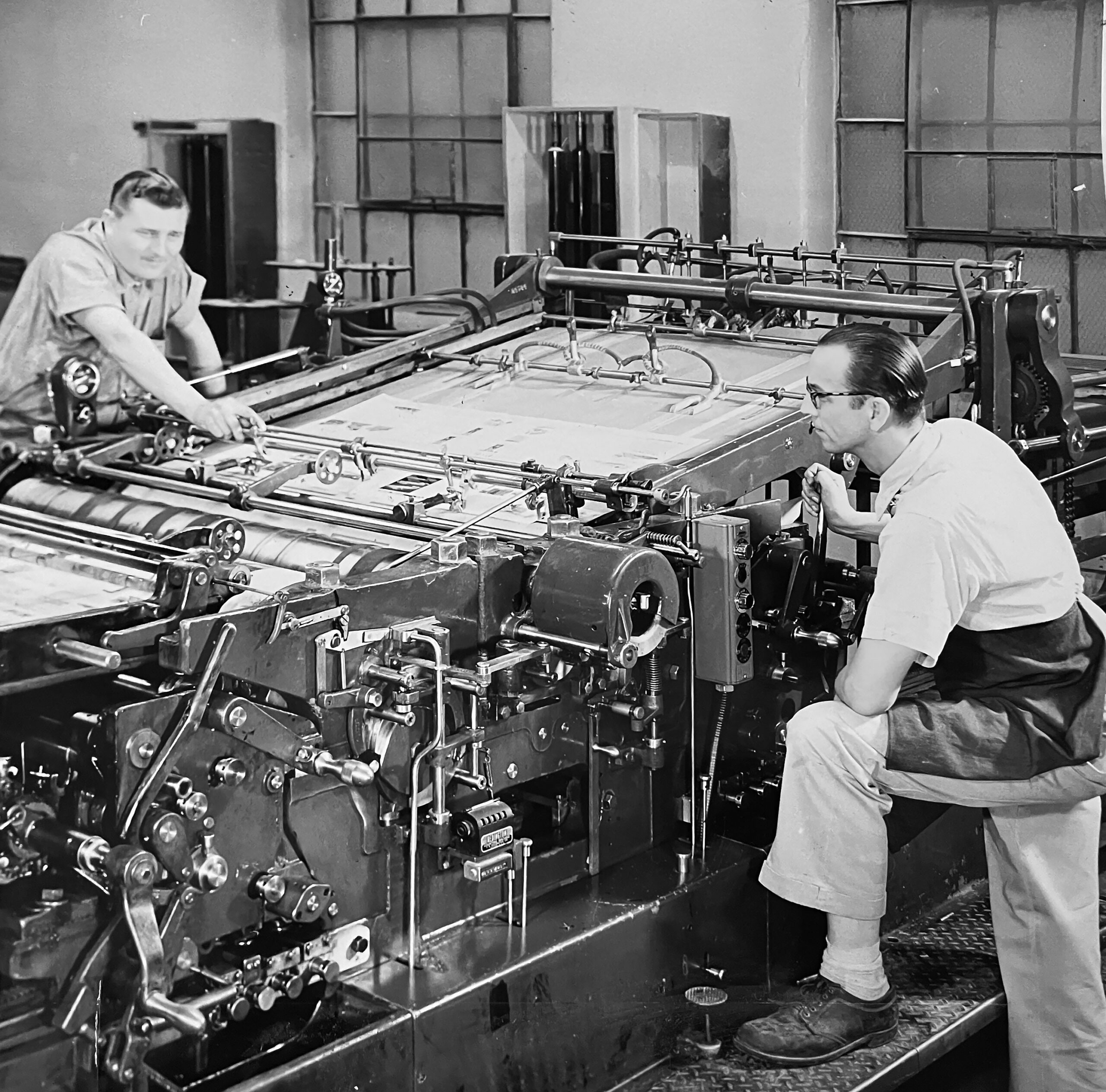
Bill Stamats
August 14, 2023

From 1963 to 1972, not only did Stamats Publishing Company navigate a major leadership change, but also transitioned beyond their identity as a printing and publishing company. With changes in printing technology and the development of a new business group, Stamats set itself on the path to recognition as a creative communications enterprise.
In late 1965, after 42 years as president of the French-Stamats Co and later Stamats Publishing, company cofounder Herbert Stamats passed the reins of leadership to his son-in-law, Horace G. “Fed” Hedges. Though retaining his Chairman of the Board status, Stamats was looking forward to his semi-retirement as an opportunity to spend more time traveling, one of his great passions. Unfortunately, Herbert passed away only three months later.
“Herbert’s unexpected death was a major transition for the business,” said Herbert’s grandson and current president Peter S. Stamats.
Fed Hedges began his career with the company in 1946 as associate editor of Buildings Magazine and would guide the company, along with Herbert’s son, Peter O. Stamats, for the next 26 years.
The 1960s saw a burst of new technology in the printing and publishing industry. As letterpress printing transitioned to offset printing, Stamats Publishing Company transitioned as well.
“This was really the advent of the Mad Men era, an explosion of media advertising,” Stamats added. “Print advertising really took off during this time and a whole host of periodical magazines emerged.”
Though letterpress is still used for high-quality printing jobs, it is more expensive, labor-intensive, and limited to a few basic colors. With sheet-fed offset printing, Stamats could print their magazines and other projects with more colors at less cost. The addition of a full-color editorial in 1968 gave our syndicated publications a whole new look and created a surge in volume.
“We had great success in business during this time,” said Stamats. “This all culminated at the end of this decade with plans drawn up to build a whole new printing facility which we completed in 1974.”
Related reading: Grooving and Growing through the 70s
An idea for a new area of business expanded during this time under the direction of Larry Zirbel. As an executive in the commercial sales division, Zirbel had the creative vision to see beyond magazine publishing into a commercial arena ripe for exploration—the higher education market.
Eventually, award-winning college magazines, catalogs, brochures, and fund-raising materials were developed from ideas to printed products. Soon the company branched out into the production of audio-visual materials including slide and tape production, films and filmstrips—all written, designed, and produced by the Stamats creative staff.
Instead of buying bigger and better equipment, Stamats Publishing embraced creativity, in both the development and communication of ideas.
“What Stamats has really been doing since 1923 is creating and distributing ideas,
communicating ideas that instruct, persuade, entertain.”
Fed Hedges